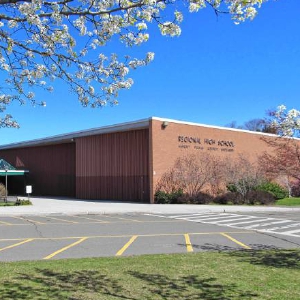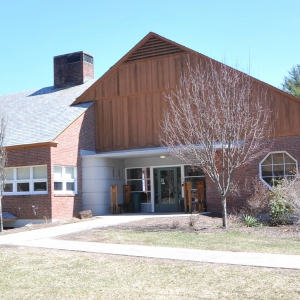Property taxes in South Hadley on the rise; how much depends on which fire district homeowners live in
| Published: 12-09-2022 12:05 PM |
SOUTH HADLEY — Typical single-family property owners in Fire District No. 1 will see a nearly $300 increase in their tax bills in fiscal 2023, a significantly larger jump than the average homeowners are facing in Fire District No. 2, based on information presented at a joint tax classification hearing Tuesday.
At the meeting between the Select Board and the Prudential committees for each district held at the South Hadley Senior Center, the three panels unanimously approved a single tax rate for all property classes in the town and in the districts.
For the typical single-family homeowner in South Hadley, the Select Board’s decision means a $194.92 increase in the tax bill, rising from $4,939.94 in fiscal 2022 to $5,134.86 in fiscal 2023.
Though the tax rate is dropping to $15.42 per $1,000 from $16.45 per $1,000 valuation, the value of the typical single-family home, of which there are over 4,000 in town, is going up, moving from $300,300 to $333,000.
Associate Assessor Melissa Couture Rimbold said this increase in valuations reflects a continued strong housing market.
In Fire District No. 1, though, covering a large section of town that includes the Falls area, an additional $99.68 tax bill increase is in store for the typical resident, with a tax rate increase from $2.03 per $1,000 valuation to $2.13 per $1,000 valuation for the fire, water and ambulance services in the district. Fire District No. 2 residents, too, will see a tax bill increase of $22.79, but the tax rate for those single-family properties is dropping from $2.53 per $1,000 valuation to $2.35 per $1,000 valuation for the district services.
Even so, the average tax bill for Fire District No. 2 residents will remain higher, $5,917.41 to $5,844.15 for Fire District No. 1 residents.
Select Board member Andrea Miles said questions are going to be directed to town officials about the big tax bill increase in Fire District No. 1. “We’re all going to hear about this the rest of the year,” Miles said.
Article continues after...
Yesterday's Most Read Articles
 South Hadley’s Lauren Marjanski signs National Letter of Intent to play soccer at Siena College
South Hadley’s Lauren Marjanski signs National Letter of Intent to play soccer at Siena College
 LightHouse Holyoke to buy Gateway City Arts, expand offerings and enrollment at alternative school
LightHouse Holyoke to buy Gateway City Arts, expand offerings and enrollment at alternative school
 Treehouse, Big Brothers Big Sisters turn race schedule snafu into positive
Treehouse, Big Brothers Big Sisters turn race schedule snafu into positive
 South Hadley man fatally shot in attempted robbery
South Hadley man fatally shot in attempted robbery
 Granby man admits guilt, gets 2½ years in vehicular homicide
Granby man admits guilt, gets 2½ years in vehicular homicide
 Area briefs: Transhealth to celebrate 3 year; Holyoke to plant tree at museum; Documentary film about reparations focus of Unitarian talk
Area briefs: Transhealth to celebrate 3 year; Holyoke to plant tree at museum; Documentary film about reparations focus of Unitarian talk
Pauline McClaflin was among those District 1 residents expressing concern, noting that those on fixed incomes will be particularly hard hit. “We don’t have that kind of increase to afford,” McClaflin said.
Couture Rimbold said the districts, unlike the town, have no constraints for spending under the state’s Proposition 2½ tax-cap law.
Fire District No. 1 Prudential Committee member John Wojciechowski said factors for the bigger budget, which is triggering the district’s tax rate increase, include staffing changes, an ambulance purchase and salary adjustments, necessary to keeping and hiring employees that has been a challenge across the state. “We had to compete,” Wojciechowski said.
He also anticipates that the district will need to start building funds for future growth and upgrading an outdated fire station, being that there is more reliance on ambulances.
“Things need to be improved on, and we need funds,” Wojciechowski said.
Next year, Wojciechowski said the hope is not to have as much of a budget increase.
“I guess I’m hoping for more than a hope,” McClaflin said.
Fire District No. 2 has been dealing with the same issues, said Prudential Committee member Kenneth LeBlanc, but he noted it is a smaller entity serving areas of town closer to Mount Holyoke College. The college’s shutdown for the first part of the pandemic was a big blow to its finances, as the district still had to be staffed for emergencies.
Commercial and industrial properties will see a decrease of $95.07 in their typical tax bills, from $5,754.21 to $5,659.14, as their average valuations rises from $349,800 to $367,000. But those in Fire District No. 1 will see an added increase of $71.62, while those in Fire District No. 2 will see another drop of $22.54.
Scott Merzbach can be reached at smerzbach@gazettenet.com.
 Belchertown mobile home village getting new water system
Belchertown mobile home village getting new water system Primo Restaurant & Pizzeria in South Deerfield under new ownership
Primo Restaurant & Pizzeria in South Deerfield under new ownership Amherst regional district towns seek middle ground on school increase
Amherst regional district towns seek middle ground on school increase Leverett Town Meeting voters will decide cease-fire call, budgets, town elections
Leverett Town Meeting voters will decide cease-fire call, budgets, town elections 
